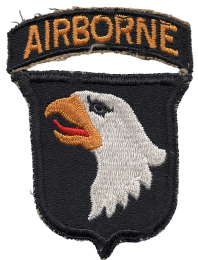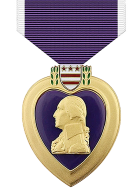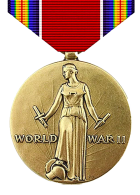I took basic training at Camp Robinson in Little Rock, Arkansas and spent about 2 months moving to other bases. Left Baltimore in October 1943 and I arrived in England on September 9th, 1943, where I joined the 101st Airborne Division on November 15th 1943. The 101st spent ten months in the counties of Berkshire and Wiltshire, training six days a week. Units worked on close combat, night operations, street fighting, combat field exercises, chemical warfare, the use of German weapons and a number of other military subjects, all in addition to demanding physical training, which included hikes of twenty-five miles. In October, the Division began its own jump school to train over 400 new personnel and key members of non-jump units of the 101st.
In January 1944 the newly nicknamed Eagle Division received the third parachute infantry regiment the 501st. In March the 401st Glider Infantry Regiment detached one battalion to be part of the 82nd Airborne Division. Major General Lee suffered a heart attack in February and returned to the United States. Major General Maxwell D. Taylor became the new commander. Meanwhile, the Supreme Headquarters Allied Expeditionary Force planned an invasion of Northern France, codenamed operation Overlord. The mission of the 101st was to jump in before the waterborne invasion force landed on an area designated as Utah Beach. The paratroopers would secure exits from the beachhead and prevent these areas from receiving Germans reinforcements.
I was assigned to C Company of the 401st Glider Infantry Regiment. We were stationed in Reading, England. We were scheduled to go to Normandy in May but that was cancelled due to bad weather. In preparation of the mission, the 101st participated in three Army-wide exercises: Beaver, Tiger and Eagle. In May, elements of the Division began leaving their training areas for the airfields and marshalling areas. They would not assemble again until they met on the drop zones of Normandy, France.
On June 3rd we went back for another try, and on June 4th we were loaded into a ship and we headed for Normandy. We came ashore at about 11:30 P.M. on Utah Beach behind the 4th Infantry Division. Our first man was killed entering Carentan were we spent the night in town.
France June 6th, 1944
At fifteen minutes after midnight on June 6th 1944, Captain Frank L. Lillyman led his team of the 101st Pathfinders out of the door of a C-47 transport plane and landed in occupied France. Behind the pathfinders came six thousand paratroopers of the 101st Airborne Division in C-47’s of the IX Troop Carrier Command. D-Day had begun. Running into heavy German flak as they approached the drop zones, many of the troop transports took evasive action and scattered the jumpers over a wide area. By nightfall only twenty five hundred men could assemble in their units.
Struggling to carry out the mission of the 101st to clear and secure the exits from Utah Beach for the arrival of the 4th Infantry Division, small groups of soldiers valiantly did the best they could. Major General Taylor could assemble only a little over a hundred men, most of them officers, before he set out to secure one of the causeways leading to Utah Beach. Referring to his brass-heavy group, Taylor remarked, “Never were we so few led by so many”
On the night of June 6th, the Assistant Division Commander, Brigadier General Don F. Pratt, led the fifty-two glider assaults during the invasion. Although all of the pilots managed to land within a two-mile area, only six of them were in the designated zone. Intelligence reports had not mentioned that most fields were bordered with hedgerows four foot earthen fences covered with a tangle of hedges, bushes and trees. Because of the darkness and the hazard caused by the hedgerows, five soldiers were killed in the landings. On of them was Brigadier General Pratt.
Glidermen played an important role during the Normandy operations. As counterparts of the Airborne infantrymen, they delivered personnel, equipment, vehicles and weapons to the Division. The first daylight glider operation occurred on the morning of June 7th. Using heavy cargo gliders, the pilots delivered 157 personnel, 40 vehicles, 6 guns and 19 tons of equipment, which was crucial to the success the Division had in carrying out it’s objectives.
After the seizure of the causeways, the 101st proceeded toward a new objective, the capture of the Town of Carentan, which was the junction point for the two American forces from Utah and Omaha Beaches and a key to success of the invasion. For five days the 101st waged a bitter fight to dislodge the German 6th Parachute Regiment from the town and to hold R until the arrival of American armour units from the beachhead. During the attack on Carentan, Lieutenant Colonel Robert G. Cole, commander of the 3rd Battalion, 502nd Parachute Infantry Regiment, wiped out a strategically important pocket of enemy resistance. For this action, Lieutenant Colonel Cole became the first member of the 101st to win the Congressional Medal of Honor.
After thirty three days of continuous fighting, the 101st was relieved and returned to England to train for it’s next mission. Elements of the Division received the Distinguished Unit Citation and the Division Commander was awarded the Distinguished Service Cross.
Bob O’ Mara





